
Questions? Give Us A Call.
Questions? Give Us A Call.
Sun to Fri 7am-7pm EST

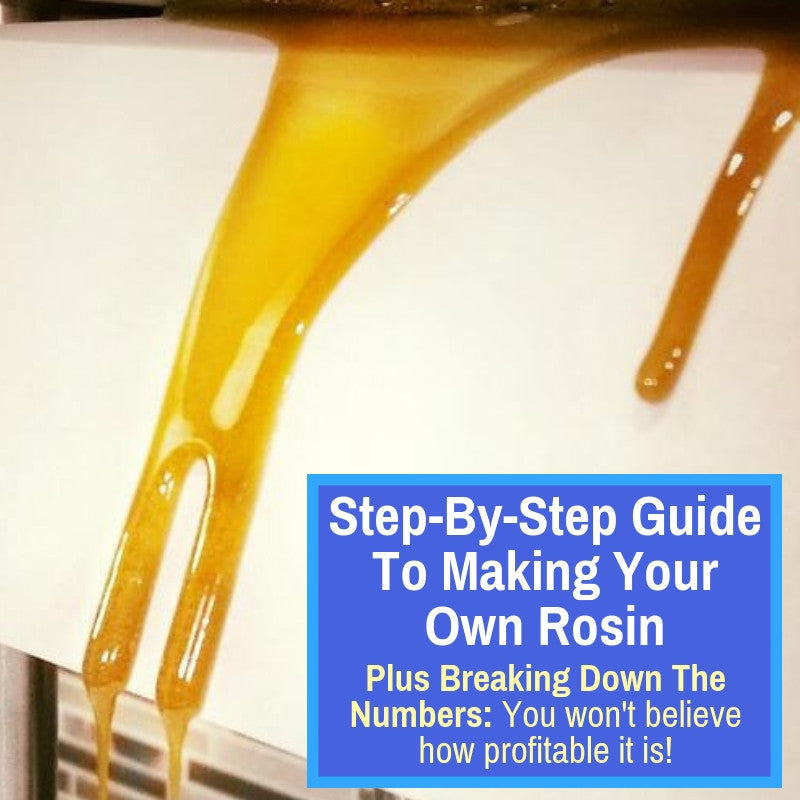
Thinking about making your own rosin for dabs, but worried it might be too complicated?
Surprise!
It's not complicated at all!
Worried it might be too costly?
It's not costly at all, either!
The biggest expense is the input material. And the cost of the press, but that's a one-time expense.
And as we show below, rosin is so ridiculously profitable that you make back the money spent on a good press within a week.
Besides, you can make your own press. Or just use the old hair straightener method.
We only cover how to make rosin with an actual rosin press, because that's how you make money. Using a hair straightener works, but the yields are far too low to make any real profit.
Nevertheless, we get a lot of questions about making rosin with a hair straightener. For that reason, we've created a step-by-step guide that takes you through the whole process, which we're currently just giving out for free. Just enter your email below and we'll be happy to send you a copy.
As mentioned, to actually make money from rosin production, you need a real press. With one of those, just follow the process below.
Before we get to that, let's briefly talk about what rosin is and examine just how profitable it can be to make your own. The numbers were surprising even to us, when we first saw them.
Rosin is a marijuana concentrate made without the use of solvents. It has the same potential potency as other concentrates, but none of the impurities. It is also referred to as solventless hash oil (SHO for short, an abbreviation we will use quite often in this article). This article explains in more detail what rosin is and why it is so popular.
One word. Profit.
Actually two words. Huge profits.

With a huge increase in competition for cannabis flower, prices have dropped and so have profits. But when it comes to concentrates, there is far less competition and a fast growing demand. This means huge potential profits.
Here's an example of what you can make, adapted from our friends at Triminator.
Profit = revenue - expenses, so let's first calculate our daily expenses. Here's what we need to spend per day:
The total costs for one day of production are thus: $2000 + $80 + $160 = $2240 in expenses.
To figure out the daily revenue, let's say that we are using a good quality flower with 22% THC (a fair assumption, given the $1000/lb price). This would get us around a 19% yield, which is 180 grams of rosin.
At a price of $20 per gram, that would make us $3600 in revenue.
Our profit per day is thus $3600 - $2240 = $1360.
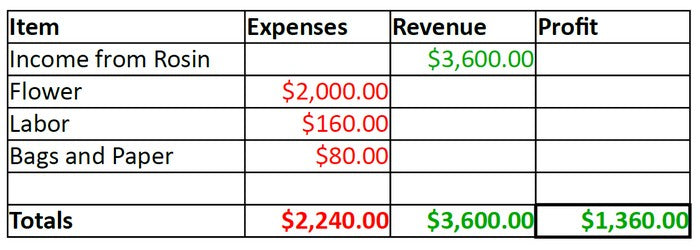
Of course this is all based on a lot of assumptions and both costs and revenues can vary quite a bit, but the point was simply to illustrate that SHO production can be extremely profitable.
What's more, if you process hash or kief, you can make much more still. Starting with some much cheaper trim and turning it into kief or hash before making rosin from it will give you a much higher yield per dollar spent and practically double your profits!
That does add some extra steps, but the extra profits make it worth the effort. Nevertheless, even with just the basic process outlined below, you can make back the money you spend on a press in just a few days.
The main thing holding you back would be the lack of a reliable buyer. But if you have someone who can take large quantities off your hands, you're golden.
After seeing these numbers, it makes perfect sense why rosin presses sell so well. Now let's see just how easy it is to actually do the pressing.
First, we'll list all the equipment you need and then we'll go step-by-step through the entire process of extracting SHO.

The material you use to make your SHO has a large impact on the quality. In general, higher quality input material leads to higher quality output. On top of that, some strains simply produce more and better rosin than others.
When it comes to type of material, you can use cannabis flowers, hash, kief/sift, shake or trim. Flower will give you the best quality, but lower yields. Hash gives you the best combination of yield and quality.
As mentioned above, the quality and strain makes a big difference, which is why you see a large range in potential yields for each type of material.
If you are using flower, try to use smaller nugs, since they have more surface area relative to their total mass. More surface area and less mass in the middle means the rosin does not have to travel as far to get out and there is less chance any stays inside.
Relative humidity also plays a vital role when pressing flower. If the nugs are too dry, they soak up much of the extract, like a sponge. The ideal range is 55% to 62% relative humidity.
If you are unsure about the humidity, these humidity packs from Boveda * ensure your material is always at the ideal relative humidity.
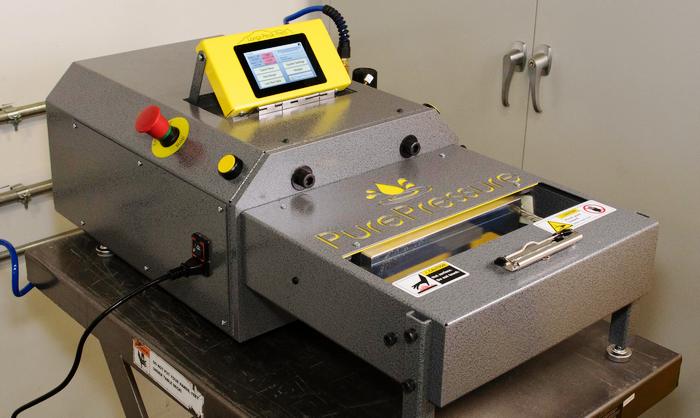
You need to apply pressure and temperature to your material and nothing does this better than a rosin press. If you're not sure which one to get, we have an article that reviews and compares the best presses of each type and another article that specifically covers smaller budget rosin presses.
Of course you can also use a hair straightener, as I'm sure you've heard. It works, but is far from ideal. Not only are quality and yield going to be much lower, it is also easy to burn yourself.
Nevertheless, I think just about everyone used a hair straightener the first time they tried to make solventless hash oil. As mentioned, we've got a guide for that method too.
Finally, you can make your own rosin press, by buying a set of heated plates and a standard shop press. Our article on DIY rosin presses details what you'll need and how to assemble it.
If you are pressing flower, you don't need to use a filter bag, but I'd recommend one anyway. For all other types of material, you'll definitely want to use one.
Rosin filter bags come in different sizes and different micron counts. The sizes are self-explanatory and you generally want to use a size that closely matches the size of the heat plates you are using.

Your best bet is to just use the filter bags made by the same manufacturer as your rosin press. That way you can guarantee they are perfectly compatible. Here are all the filter bags we carry.
The micron count refers to the size of the microscopic openings that allow the rosin to pass, but filter out the plant material. A smaller micron count means a smaller opening, resulting in purer, higher quality rosin. Naturally, this also means smaller yields.
Which micron count to go with is a matter of personal preference. You have to find the balance between yield and quality you are comfortable with. In general, use a smaller micron count for finer material and a larger for larger material:
You'll find much more info on micron sizes for bags here.

The parchment paper is used to collect the SHO. You can find parchment paper in most grocery stores. Just make sure you buy unbleached paper. You can also get it on Amazon. This is a good brand.*
If you want to make sure you get high-quality, FDA approved food-safe paper, we sell paper made by PurePressure and by Rosin Tech Products, which you can find on this page.
Now we get to the actual SHO production. As you'll soon see, the process is actually quite easy. The only real difficulty (if you can even call it that), is finding the perfect temperature, pressing time and pressure for your particular strain.
It will take some trial and error, but even when you don't have the ideal settings, the results will generally still be pretty good.

Fill your filter bag with material. Make sure not to over-stuff it. You need to leave some empty space in the bag to prevent it from blowing out during the press.
If you are pressing flower and not using a bag, ignore this step, obviously.
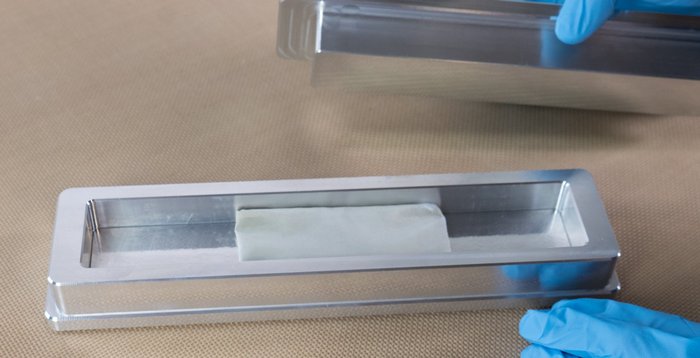
If you do not have a pre-press mold, don't worry about this step. If you do have one, put your bag inside the mold and apply pressure.
Pre-pressing your material ensures that it is more evenly packed and distributed to the seams, which makes for easier oil extraction. It also helps prevent bag blowouts, especially with kief, dry sift, hash and bubble hash.
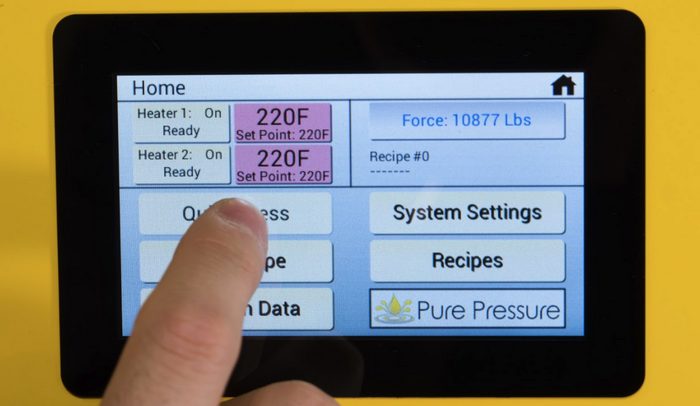
This part is a bit tricky, since every strain is different and they all react differently to the same pressing times and temperatures. For that reason, it is best to start out with small amounts, until you dial in the ideal time and temp for your particular strain.
To get started, we recommend the following times and temperatures, and then adjusting from there:
This article has much more on temperature and pressing time, as well as pressure and humidity.
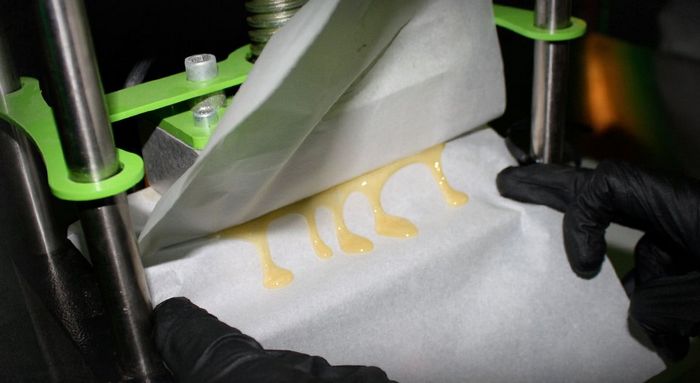
Take a piece of parchment paper (you may have to cut it, if you are not using the same brand as the press) and fold it in half. Place you filter bag with the material in between the two halves of the parchment paper and put everything on top of the bottom pressing plate. Make sure the material is in the middle of the plate.
Engage the press. When it is done, remove the material from the parchment paper. You can go ahead and press a second, and even third, time. Yields and quality go down with each subsequent press, but you generally still get a good bit of extract, so it's usually worth it.
A note on pressure.
A lot of press manufacturers tout the massive pressure delivered by their presses, but the truth is, this is usually overkill. The ideal pressure for different input materials is:
The following graph illustrates this. You can see that you do get an increase in yield beyond those pressure levels, but it is a slight increase. And with that higher pressure, you also get an increase in the possibility of pushing fats, lipids and chlorophyll into your rosin, all of which could decrease quality.
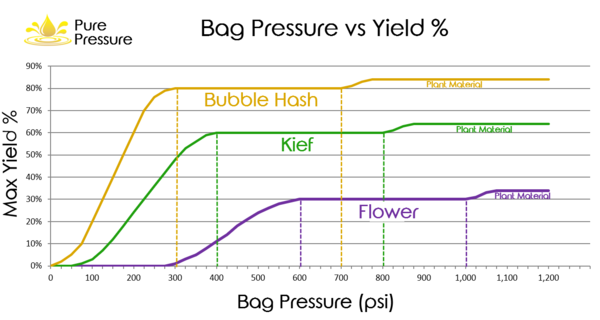
If your press allows you to control the amount of pressure delivered, you might consider keeping pressure levels within the ideal ranges given above.
In order to calculate the psi (pounds per square inch) of your press from the pressure given in tons, perform the following calculation:
As you can see, with that bag size, a 10 ton press delivers far more pressure than is actually ideal. 5 tons of pressure would be plenty for any type of material with that same bag size (5 tons is 10,000 lbs / 10.8 = 926 psi).
As with anything, this all depends on so many factors: the strain and quality of the input material, the relative humidity (ideally 55% to 62%) and your personal preference among others.
That is why the key is to start with small amounts and adjust temperature, time and pressure until you find the right combination for that strain and your tastes. Then ramp up production.

Collecting the SHO is much easier when it is cool. To cool it down, you can simply put the entire parchment paper in a refrigerator. Alternatively, you could hold an ice pack underneath it.
Once it has cooled, use a titanium dabber tool to scrape the extract off the paper. On the dabber, it rolls up off the paper kind of like a snowball.
You could, of course, improvise and use any number of tools or utensils you already have around the house, like a flat head screwdriver. That said, using the right tool made for the job makes it faster and easier.
If you are getting extract that is too dark or green or otherwise not quite right, check out this article.
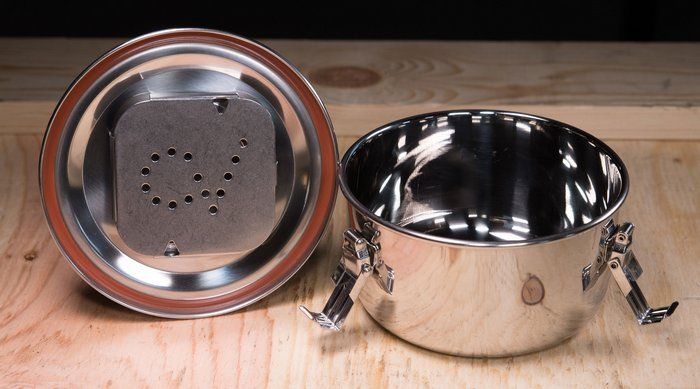
How best to store your solventless hash oil depends on how long you plan on storing it.
For short-term storage, it is best to wrap the extract in parchment paper, then place it in a small silicone container (food-grade, of course), that has as little remaining air space as possible. Keep this in a dark and cool location (slightly below room temperature).
For long term storage, it is best to wrap it in parchment paper, then put it in a vacuum-sealed glass jar or stainless-steel container. Some people put it in a sealable plastic bag first, then put that inside the container. Store the container in a dark, cool location (slightly cooler than room temperature).
The best thing to do with the leftover "puck" of material is to infuse it into butter or oil for cooking. Some people just throw it away, but why not get some use out of it.
Disclaimer: Some things discussed in this guide may be illegal in your location. We do not encourage the violation of any laws. If anything above is not legal in your area, then please understand it is for entertainment purposes only (specifically, for the entertainment of those who live somewhere with better laws…).
*Commission Earned



Comments
Leave a comment